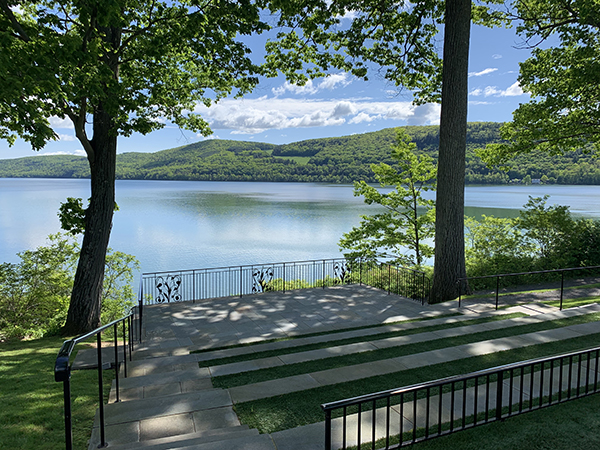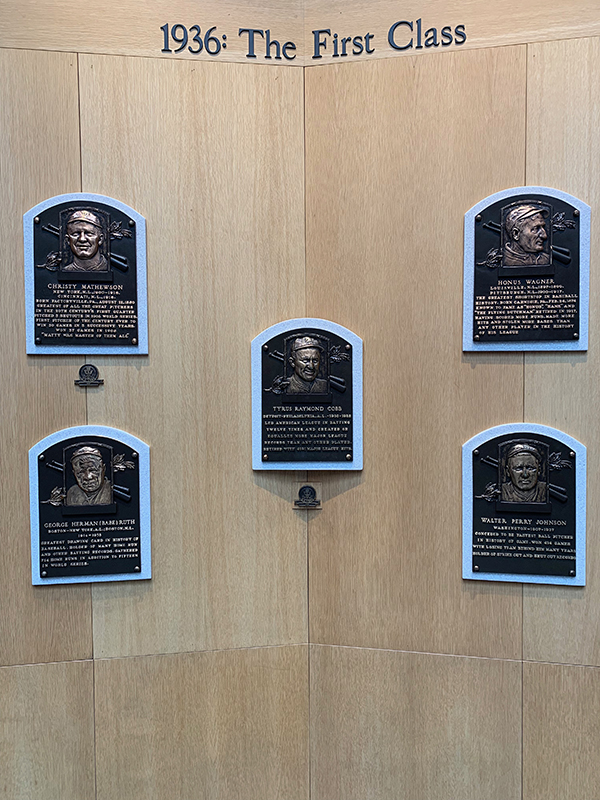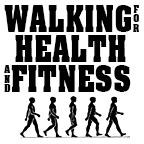Walking in Cooperstown, NY
Walking Destination: Cooperstown, NY - History, Culture, and Baseball.
The crack of the bat, the roar of the crowd, and the smell of hotdogs! Springtime and baseball are the ingredients of my sports-obsessed childhood. So, what would be better than to spend a day walking in Cooperstown, NY the Home of the Baseball Hall of Fame?
But, Cooperstown is much more than just baseball, and spending a day walking in Cooperstown will expose you to history, culture, and fitness all in one enjoyable day trip.
What to see in Cooperstown - Walking for the Cooperstown “Cycle”
Like a ballplayer who hits for the cycle in a game, here is my version of the cycle when walking in Cooperstown, NY.
• The Home Run – Walking in Cooperstown, NY
• The Triple – Visiting the Baseball Hall-of-Fame
• The Double – Visiting the Fenimore Museum
• The Single – The Farmers Museum
Walking in Cooperstown, NY - Getting There
Cooperstown is roughly 3 1/2-hour drive from Northern New Jersey. I traveled the N.Y. State Thruway up to exit 16, then traveled west on Route 17.
I left North Jersey at 6 am on a beautiful but chilly spring morning in June. By the time reached Liberty, NY it was 39 degrees. Let me remind you it was JUNE!
I traveled to exit 94 in the town of Roscoe and made a quick coffee stop at the famous Roscoe Diner.
When I looked at the Map app, I quickly saw there is no direct highways access. The quickest route was to drive the local 2 lane roads. Google maps directed me via the least miles route to Cooperstown which was over some of the tightest hilliest country roads I’ve ever traveled on! I got there in the least number of miles, but the most amount of grey hairs.
Word of caution when using a mapping app! Have a printout of the route before traveling. Had I spent a few minutes to look at a larger map then sticking to a planned route, I would have stayed on the more traveled Route 206 instead of being directed off of it by the app in order to cut some miles off the trip. In the past, I’ve found mapping apps route me through some pretty desolate roads all in the name of shaving 1 mile off the route.
Parking in Cooperstown
I love what the town has done! There are 3 free parking lots on the outskirts of town. All are within walking distance of Main St. I chose to park in the Yellow lot on Lake St. next to the Fenimore museum. From this lot, the Baseball Hall-of-Fame is 1.4 miles. As walks go, it was an easy walk (more info below)
The town has set up a Trolley system to get you around so that you can park once and just pay a slight fee for the service. Ride all day for just $2 per individual and $5 per family.
-Yellow Lot at Lake St. next to Fenimore Gallery to HOF… 1.4 miles
-Red Lot at Main St. and Rock St. to HOF… 0.7 miles
-Blue Lot at Linden Ave. across from ball fields… 1.4 miles
A great option is to walk to town, see the Hall and other areas, then return by trolley if you’re tired later in the day.
The Fenimore Museum
I arrived in Cooperstown at 9:30 and parked in the Yellow lot north of town and next to my first destination, The Fenimore Art Museum. I chose this lot so I can visit the Fenimore first, then walk into town to complete the circuit of my planned walking destinations.
I walked the beautiful grounds of the museum for half-hour taking pictures of Lake Otsega from the back-patio terrace and continuing onto the walking path that leads you to the Lucy B. Hamilton Amphitheater which sits just above the lake at the bottom of the museum grounds. The lake view is spectacular from here, and on this crisp clean spring morning, the large bright clouds added to the majesty of the lake and surrounding mountains.
Cost of Admission: Cooperstown has a great money-saving program in which you can visit a combination of all three of the town’s main attractions at a reduced rate. I paid for a discount pass to the Fenimore and the Baseball Hall-of-Fame and saved money with the Double Play: $33.00 / $18.50 Juniors (7-12) which included Admission to the Baseball Hall of Fame and Fenimore Art Museum and saved $4.
The Fenimore Museum was founded in 1899 while the present building and grounds were donated by Stephen Carlton Clark in 1939. The Fenimore currently contains exhibits such as The Coopers of Cooperstown, American Folk Art, American Fine Art, Hamilton’s Final Act (about his feud with Aaron Burr), and so much more.
I find museums, in general, a bit “stiff and stuffy”; I found the set-up of the Fenimore very open, bright, and most inviting. I particularly enjoyed the Rock Photo exhibit of photographer Herb Ritts, with great images of the rock stars of the ’80s.
My favorite exhibits were the early versions of cigar store Indians, and the museum’s collection of paintings and artifact of the Fenimore Cooper family.
Major benefactors of the museum were Gene and Clare Thaw. I find their philanthropic commitment to the museum admirable with the nearly 900 pieces of American Indian Art they donated to the museum.
The exhibit, Eugene and Clare Thaw: A Memorial Tribute, was one of my favorite parts of the museum. The Thaw’s must have been special people to have recognized the significance of the history of the artwork and the impact that one has in leaving behind such a legacy to those that come after you.
>> Read 29 Things to Do While Walking for more ideas to get you walking for health and fitness <<
The Farmers Museum
Directly across the street from the Fenimore Museum is the Farmers Museum. While I didn’t enter the museum due to lack of time, the museum is a great destination for children.
The Farmers Museum is one of the oldest rural life experiences in the country providing visitors with a unique opportunity to experience 19th-century rural and village life firsthand through demonstrations and interpretive exhibits.
The Farmers Museum is home to the Cardiff Giant! I had not planned to go to the Farmers Museum, just write a description, so I did not do much prior research on it. This is a big regret as one of the main attractions is the Cardiff Giant. The significance to me is that in 5th grade I read a story about this great hoax. The story came flooding back to me as I passed the road sign about “The Giant Hoax”. Oh, the things long forgetting that come back at a moment’s notice!
Walk on a well maintained sidewalk and enjoy a great view!
The Walk into Cooperstown
From the museums, I walked south along Lake St. There are no sidewalks as you pass the well-manicured fairways of Leatherstocking Golf Course at the Otesaga Resort until you cross the town-line into Cooperstown proper, at roughly ¼ mile. The walk from the museum is safe as there is a cinder path along the side of the road that makes for even footing, and as I was facing traffic felt totally safe.
Once I reached the town line, I crossed the street to the well-maintained sidewalk. Before getting to town, I walked the ground of the Otesaga Resort which is situated along the water’s edge. The photo opportunities of the lake and surrounding mountains are outstanding from the back of the grounds above the lake.
Walking Main St. Cooperstown
My walk continued down Lake St. and I turned right onto tree-lined Chestnut St. pass the old Inn at Cooperstown. I then crossed Main St. and walked the ½ block to the Cooperstown Information building for in search of some local knowledge. The helpful Cooperstown expert informed me of Christ Episcopal Church and the cemetery, located just 1 block south-east of the Baseball hall-of-fame, that contains the grave of James Fenimore Cooper. It’s always worth stopping at a town’s information center for some “inside baseball” (sorry, I couldn’t resist).
Main St. Cooperstown is populated by baseball themed business establishments as you would expect. But I also found walking around this popular destination very laid-back. While there was a steady stream of people, mostly families with young boys wearing baseball caps, Main St. never had the feel of being overcrowded. The buildings on Main St. are well-maintained wood facades, built in the earlier half of the 1900s. They gave me a feeling of being back in time when the Hall-of-Fame was first opened in 1939.
I made the decision to get my sightseeing and walking miles in before going to the Hall-of-Fame.
First stop was to Doubleday field just west of the Hall-of-Fame located behind a parking lot on Main St. Built in 1920, the stadium as an old-time feel to it. Wooden bleachers behind home plate, no individual seats at all in the stadium, it feels like I just walked back in time.
I then walked past the Hall’s three-story brick building, turned right onto Fair St. into Coopers Park and walked up to a statue of famed writer James Fenimore Cooper. Check out his famous novel, The Last of the Mohicans.
Cooper's father William established the village in 1786. As you walk up the street, look to your right and take in the baseball garden statue displays on library grounds of the Hall-of-Fame. This sculpture garden has several statues that capture the game of baseball. My favorite display captures both pitcher and catcher plying their craft, 60 feet 6 inches apart.
Cooper Park has a walking path, shade, and plenty of benches to sit and take the time to soak in the atmosphere of the quiet rural setting.
Walk across Church St. and enter the cemetery and grounds of the Christ Episcopal Church. This very peaceful spot is the final resting place of James Fenimore Cooper, his wife, and his father. An information display points out the burial location of several prominent people.
While there, stop into the smaller chappal and take in the quiet time.
I exited the church grounds down a tree-lined road and turned left down River St. and walked to the bridge at the east end of Main St. The Susquehanna River begins right under the bridge as it spills out of Otsego Lake. The river on the right and the lake on the left gives you a great photo opportunity as you are well above both bodies of water.
From the bridge I turned back to Main St. turned right and continued down River St. which then bent to the left and changes its name to Lake St. A quick two blocks and a turn to the right onto Fish St. put me at the entrance of Lakefront Park. From the top of the step, you get a great view of the entire lake all the way up to the farthest northern edge and the mountains that frame it.
Take the steps down to the great lawn area, and then to the pathway at the edge of the water. This well-maintained park has restrooms and shade benches. Don’t miss the statue of the Indian Hunter which was created by John Quincy Adams Ward in 1897.
Head back out to the park by returning up Fish St. to Lake St. turn right then a quick left turn up Hoffman Ln. which will take you back to Main St. turn left on Main and walk the half-block to the entrance of the Hall-of-Fame.
Before entering the Hall, I stopped for lunch at Mel’s at 22 Classic American Cuisine. Located at 22 Chestnut St. — Excellent choice with it’s great food, cold drinks, and friendly staff!
The Baseball Hall-of-Fame
The Baseball Hall-of-Fame is a fascinating place. If you’re a baseball fan, you must get here. If you’re not a baseball fan it is still a very interesting place to visit. The history of the sport, the evolution of the game, and the memorabilia and displays make for a fun-filled and informative visit.
I spend nearly two hours at the hall walking from floor to floor and passing every exhibit at least once and reading quite a few of the descriptions, plaques, and trophies. I took dozens of photos with my iPhone of my teams - (Mets and Yankees) - players, hats, bats, uniforms, news clippings, photographs, and newsreel highlights.
One enormous difference I saw since I was last here in 1998 was the multi-media screens playing in nearly every section of the Hall. Game highlights, great defensive plays, the most iconic players and games in the history of the sport were all there on display. You can just stop and watch the on-screen action at any time.
I watched intently as George Brett was called out for having too much pine tar on his bat and seeing his charging of the home plate umpire. I loved seeing Derek Jeter’s final hit, in Boston no less, and watch the opposing crowd give him a standing ovation. Dodger fans will love the digital flyover tour of Ebbets field, Yankee fans will love the individual video displays of all the World Series Championships they have won, set behind a giant mesh screen with the number 27 painted in white.
In room after room, the sights and sounds of the game come alive. This is truly a remarkable place!
A must see is reverential treatment give to Babe Ruth, which includes the largest single area devoted to one player. Babe was in a class of his own in his pitching ability and later, and more famously, his hitting feats. After the “Black Sox” scandal of 1919 Babe Ruth is generally credited with saving the game of baseball.
You must visit the library side of the Hall and watch the Abbot and Costello’s Who’s on First routine from the movie The Naughty Nineties. I’ve watched it at least a hundred times over the years and still found myself laugh along as did several other people sitting there with me.
The Baseball Hall-of-Fame is a feel-good place plain and simple! There is the electric feeling of excitement in the air as young kids look at the exhibits and read a baseball fact then exclaim “I knew that!”; their dads standing behind them wearing the world’s biggest smile on their face with the unspoken “That’s my boy!” air of pride.
I just liked the whole family atmosphere, the wonder of the sport I grew up loving, and seeing all of the greatest players in the history of the sport being honored within one place!
Why is Cooperstown Home to the Baseball Hall-of-Fame?
Cooperstown philanthropist Stephen C. Clark was looking for a way to save the town economic viability. He asked National League president Ford C. Frick if he would support the establishment of a Baseball Hall of Fame in Cooperstown. An agreement was made, and in 1936 the inaugural Hall of Fame class of Ty Cobb, Walter Johnson, Christy Mathewson, Babe Ruth, and Honus Wagner were elected.
The Hall was officially opened in 1939.
Walking Mileage
I use Map Pedometer to plan out my walking routes. It’s easy to use and will inspire you to choose new locations when planning out your walks.
- Yellow Lot at NY 80 next to Fenimore Gallery to HOF… 1.4 miles
- Red Lot at Main St. and Rock St. to HOF… 0.7 miles
- Blue Lot at Linden Ave. across from ball fields… 1.4 miles
- HOF to Lakefront Park water’s edge… 0.2 miles
- HOF to Cooper Park… 0.1 miles…
- HOF to Doubleday field… 0.2 miles…
- HOF to the bridge over the Susquehanna River… 0.15 miles
- Walk around the grounds of the Otesaga Resort Hotel… 0.2 miles
Pros of Walking in Cooperstown
• The main points of interest are all within a reasonable walking distance so that a visit to Cooperstown can be used as a walking workout day.
• The 3 diverse museums are excellent attractions and will keep you entertained and engaged.
• The Terrain is flat, sidewalks are plentiful, and the houses and businesses are so well maintained that walking in Cooperstown was a pleasure.
• There are a wide variety of places to eat and drink.
Cons of Walking in Cooperstown
• Cooperstown is off the beaten path so the car ride there is slower as the route, taking you over the hilly areas, are smaller 2 lane roads.
• The weather seems to change quickly in Cooperstown, what started as a beautiful sunny day turned cool and rainy by mid-afternoon. While it may not seem fair to put weather as a con after one visit, I’ll just state that all week I had tracked the weather and the predicted weather changed often. So, pack rain gear if you go in the springtime.
The Walking for Health and Fitness Recommendation
Walking in Cooperstown is a great day trip. A beautiful lake setting, tree-lined streets to walk, food, drink, and with 3 diverse museums. With the Baseball Hall-of-Fame, Fenimore Museum, and the Farmers Museum there is something for everyone. I highly recommend taking this trip back in time and enjoying this excellent walking destination.
Walk on,
Frank










































Sign up for my email and get my Walking for Health and Fitness “Get Out the Door Checklist”











